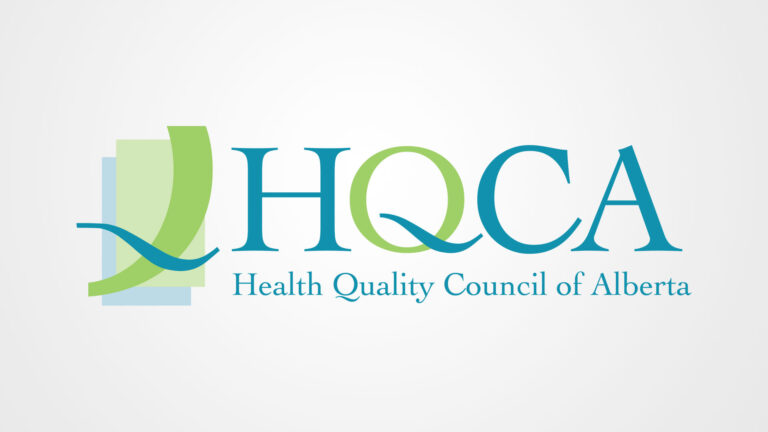
Like all regulated health professionals, pharmacists and pharmacy technicians must maintain their competence.
The requirement for ACP to have a Continuing Competence Program comes from the Health Professions Act, which obligates all health professionals to look at maintaining competence and being able to apply advances in their profession as a lifelong process. ACP deputy registrar Kaye Moran notes that maintaining competence can make regulated members more efficient and more effective in their interactions with patients.
“Having current knowledge and skills makes it easier for pharmacy professionals to answer questions or facilitate care to meet the needs of their patients,” said Kaye. “It also means that healthcare resources can be used most effectively and that patients have access to a broad range of services. It also helps build and maintain the public’s trust in their pharmacy team.”
The CCP is administered by ACP’s competence team, who supports pharmacy professionals in maintaining their competence and improving their practice. The competence team also manages the application and approval processes for additional prescribing authorization and authorization to administer drugs by injection.
The competence committee
Direction for the CCP comes from ACP’s competence committee—a group of five pharmacists and three pharmacy technicians appointed by Council. The committee fulfills their responsibilities as provided in the Health Professions Act and advises the competence director—the leader of the competence team—about the development and maintenance of the CCP.
“We rely on the pharmacists and pharmacy technicians who make up the competence committee to provide direction when it comes to the competence of their fellow pharmacy professionals,” said ACP competence director Pamela Timanson. “I look at our competence team as facilitators, taking direction and information from the committee and communicating that to regulated members. We also relay the experiences of regulated members back to the committee to support them when making decisions.”
The competence committee also decides what action needs to be taken by individuals who require support for their competence. For example, if a regulated member’s professional portfolio is audited and found to have significant deficiencies, they are referred to the competence committee. The committee will then direct the member to complete activities such as educational webinars that provide support on how to better apply learning to their practice and document it.
The committee may also direct a competence assessor to visit the regulated member and identify areas where support is needed. For example, if a pharmacist is struggling with assessing patients using opioid medications, the competence committee may direct them to review the opioid assessment guidelines and identify ways they can implement them into their practice. The pharmacist then reflects on how they have implemented their learning and this information is provided back to the committee.
Practice Improvement Program
Another way to support regulated members is the Practice Improvement Program (PIP), which was introduced in early 2022 to help those who may not be consistently meeting the minimum level of practice. The competence committee can then establish an individualized plan to facilitate the improvement of the regulated member’s practice. This way, support can be targeted to specific deficiencies in practice, competence, or behaviour to directly focus efforts where improvement is required.
“We’ve heard from regulated members that they like how the CCP supports them in documenting their learning and even thinking about how they implement that learning into practice,” said Kaye. “However, this only acknowledges a small subset of how competence is maintained. The PIP provides a more wholistic opportunity to understand more about the pharmacy professional and how they approach caring for patients, in whatever context that may be. Having more than learning and implementation records as demonstrations of competence is an important way to have a more fulsome understanding of someone’s practice and competence.”
The program is structured to allow referral of registrants who may demonstrate practice deficiencies as identified by other ACP programs. When a regulated member begins the PIP, they can first expect an introductory meeting with the ACP competence team.
“We look to get to know them better and understand their practice and their history,” said Pamela. “We explain the program and the process, outline the role of the competence committee, answer any questions they have, and support them through the committee’s directives as they work to improve their practice.”
Timelines and milestones are designed for each participant to create a roadmap to success, and regular check-ins and communication allow for further assistance where needed. Collaboration with peer coaches and even with those within a regulated member’s own workplace are encouraged.
“The Practice Improvement Program takes a more individual approach to improving practice,” said Pamela. “We’ve recognized that working with regulated members individually is much more beneficial than trying to work at an arm’s length and providing directives through letters. We get to know the individuals and develop rapport with them. We understand where they need help and provide that support.”
Setting up pharmacy professionals for success
A big misconception about the PIP is that regulated members are in trouble if they are referred to it and at risk of losing their practice permit. In fact, the PIP was not established to punish regulated members who are struggling to meet the standards; it was developed to set those individuals up for success.
“The PIP is about supporting improvement, not about punitive action. We want individuals referred to the program to improve,” said Pamela. “We’ve recognized that the best way to do that is through building relationships and using an individual approach. We work with the regulated member and facilitate their learning in a way that will best meet their needs.”
In some cases, individuals referred to the competence committee or the PIP will work with a competence assessor or coach. Those referred may have experienced some “competence drift” as Pamela describes it.
“They are drifting off of the minimum standard or showing inconsistences in practice, so we’re hoping to bring them back to the standard or even go beyond that minimum mark,” said Pamela. “Some regulated members feel like they must be horrible pharmacy professionals if they’ve been selected to work with an assessor or coach. That’s not the case. Instead, it should be looked at as an opportunity. I want them to be open minded and inquisitive. We want them to succeed. Those who have shown that engagement, have been committed to completing the direction of the committee, and prepared for competence assessments are successful at improving their practice more times than not.”
Pamela admits that it’s been a learning experience for the competence team through the first few months of the PIP. They’ve learned about the apprehension that regulated members have when they first participate in the program.
“In a way, those who are referred to the PIP are quite lucky to get the support that only a few regulated members get to experience,” said Pamela. “In my experience with the committee, they root for their fellow pharmacy professionals. They put themselves in the shoes of the regulated member and think about what support they might need if they were in the same position. That’s the most valuable piece of having a competence committee of pharmacy professional peers.”




